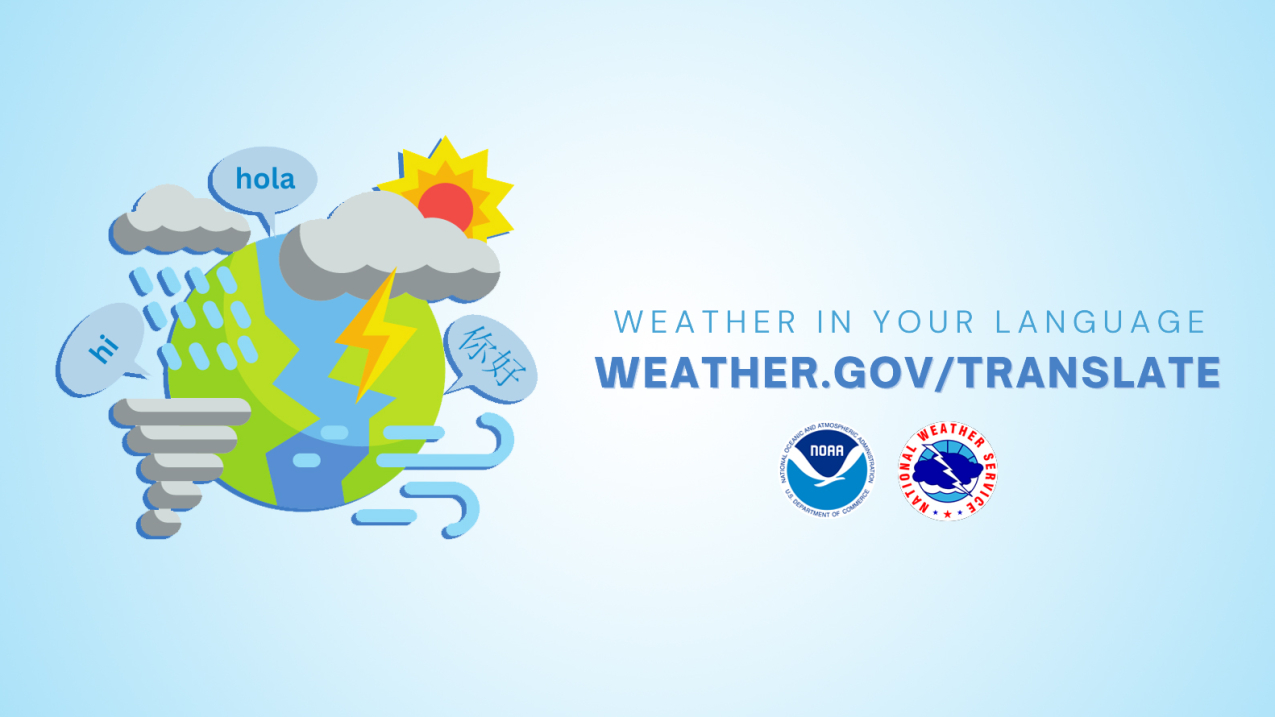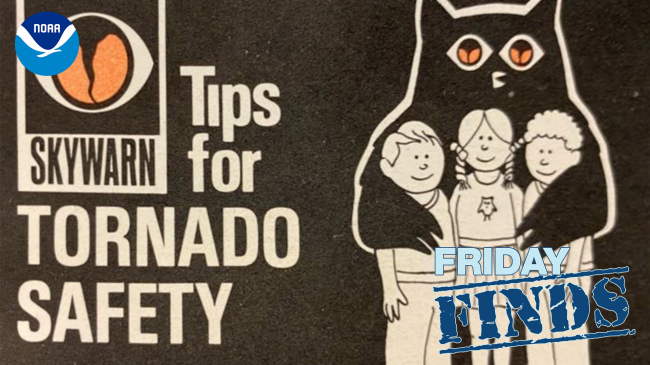Project scalable to other languages in the future

The National Weather Service is asking for public feedback on its new Spanish and Chinese translation services powered by Lilt's AI language model. (Image credit: NOAA)
NOAA’s National Weather Service (NWS) has provided manual translations of weather forecasts and warnings in Spanish for the past 30 years, but now the agency has a new tool to be more accurate, efficient and equitable.
Through a series of pilot projects over the past few years, NWS forecasters have been training artificial intelligence (AI) software for weather, water and climate terminology in Spanish and Simplified Chinese, the most common languages in the United States after English. NWS will add Samoan and Vietnamese next, and more languages in the future.
This effort was supported by the House Appropriations Committee in NOAA’s fiscal year 2023 Congressional budget.
"Getting timely weather alerts ahead of a dangerous storm in multiple languages helps ensure that potentially lifesaving information is available to everyone,” said U.S. Rep. Grace Meng (D-NY), a member of the House Appropriations Subcommittee on Commerce, Justice, and Science. “By capitalizing on the advancements of AI technology, we will be able to provide these alerts in even more languages in the near future. I want to applaud the National Weather Service and Lilt for working with me to meet people where they are. By helping to be more inclusive and further increase safety in our many diverse communities, we can protect more people from severe weather storms in the United States.”
“This language translation project will improve our service equity to traditionally underserved and vulnerable populations that have limited English proficiency,” said Ken Graham, director of NOAA’s National Weather Service. “By providing weather forecasts and warnings in multiple languages, NWS will improve community and individual readiness and resilience as climate change drives more extreme weather events.”
Seeking public feedback
Phase one of the project is today’s launch of an experimental language translation website that NWS is seeking public comment on through September 29, 2024. Public review and feedback on the translations will inform future expansion of this project and assure that NWS is providing the best possible translation services to our customers.
General feedback may be sent to nws.translate@noaa.gov.
Targeted feedback may be provided through this survey:
- https://www.surveymonkey.com/r/ExpNWSTranslationWebsite_2023 offsite link (English)
- https://www.surveymonkey.com/r/ExpNWSTranslationWebsiteChinese offsite link (Simplified Chinese)
- https://www.surveymonkey.com/r/SitioWebDeTraduccionExpDelSNM offsite link (Spanish)
The new translations are available by a growing number of participating NWS forecast offices.
How it works
To accomplish its new translation services, NWS teamed up with Lilt, a machine learning company specializing in large language models focused on multilingual customer experiences. Through pilot projects, NWS scientists have trained the Lilt language model in weather terminology. As Lilt learned NWS terms and language, the model became smarter and more specialized, sparking awe in those who have worked with it.
“We’ve been training the Spanish model for three years now and it’s remarkable how quickly Lilt learned NWS and weather terminology and how few corrections to the translations have been needed,” said Monica Bozeman, automated language translation lead with NWS. “Manually translating our forecasts is labor intensive and not sustainable. Using the AI model during our pilot project, our Spanish forecasters reduced the time needed to translate National Hurricane Center storm products from 1 hour to less than 10 minutes, which allows them to focus more time on their core duties of forecasting and decision support services.”
Bozeman added that her team is learning a lot about the intricacies of how NWS English forecast products are represented in other languages, and they also are seeing promising results with difficult languages like Simplified Chinese. “We look forward to receiving community feedback to ensure that the translations are culturally meaningful and understandable,” she said.
Features of the website include:
- Navigation, instructions and descriptions available in each of the supported languages.
- A “Watch, Warning and Advisory” or Hazard Map in each of the supported languages.
- Geo-location services to help people identify their local weather forecast office.
- Tooltips for glossary terms to define select words and phrases and display alternate terms or dialect words in their preferred language.
- Links to download text products.
- Permalinks to text products.
- Alert banners when select short-fused hazards are in effect for the selected area, with links to the hazard map page.
- Translated versions of select NWS Weather Safety Infographics.
Future capabilities to expand the reach of these translations and/or enable private sector innovation include placing translations into the NWS API, putting them in Common Alerting Protocol format and triggering automated posts on social media in multiple languages.
The use of artificial intelligence in language translation offers many benefits, including higher accuracy to minimize risk from manual translation errors; the ability for forecasters to more easily check and edit the translations; the ability to provide translations in languages for which NWS does not currently have bilingual staff and without hiring full-time translators; and the ability to build the translation process that can scale into more languages.
Media contact
Susan Buchanan, NWS.PA@noaa.gov, (301) 427-9000



